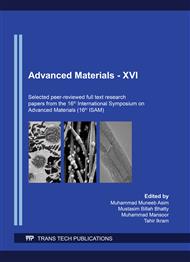p.266
p.272
p.280
p.286
p.294
p.302
p.315
p.322
p.329
Effect of Ni3Al Coating on Vibration Suppression of Beams of Various Thicknesses
Abstract:
High cycle fatigue (HCF) caused by the vibratory stresses is the main cause of failure in many machine components, e.g. aircraft engine and gas turbine components, which has caused loss of many lives and billions of dollars. To avoid these kind of failures, vibratory stresses should be attenuated to an acceptable level, especially at resonant frequencies. A lot of previous studies have shown that thin coatings of different materials significantly reduced these vibratory stresses by adding extra damping to the system. These include viscoelastic materials, plasma graded coatings, piezoelectric materials, and magneto-mechanical damping material coatings, but some of these had applicability and performance issues. Among these thin coatings, magneto-mechanical materials are very effective in reducing these vibratory stresses significantly.In this study, the effect of different beam structure thicknesses under same magneto-mechanical coating of 0.2mm was studied. For this purpose, Ni3Al was applied as magneto-mechanical coating. The natural frequencies, damping ratios and displacements of beams were calculated before and after applying magneto-mechanical coatings using forced response analysis and hammer tests. The results indicated a sharp change in vibration characteristics i.e. natural frequency, damping ratio and beam deflections, of all the beams used. The results showed that the magneto-mechanical coatings were more effective when applied to thin structures as compared to thick structures, because thin structures have higher strains, which enabled magneto-mechanical coatings to dissipate larger amounts of energy of applied loadings, because performance of these coatings is strain dependent.
Info:
Periodical:
Pages:
294-301
Citation:
Online since:
February 2021
Authors:
Price:
Сopyright:
© 2021 Trans Tech Publications Ltd. All Rights Reserved
Share:
Citation:


